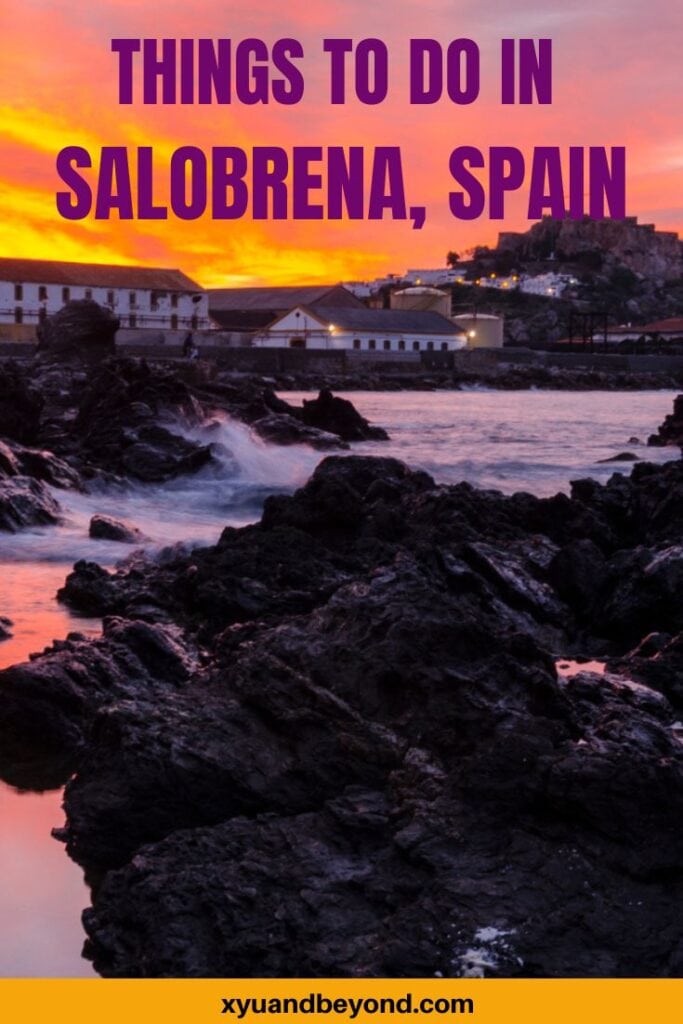Visiting Salobreña Spain on the Costa Tropical
Salobreña Granada is located on what is known as the Costa Tropical. It is a gorgeous little whitewashed town hanging on a large rock that juts close to the sea. It is topped with a Moorish castle and surrounded by of all things sugar cane plantations. Salobreña, Motril, and Almuñécar on the Granada coast all make for fabulous vacations in Spain.
Salobreña is only 45 minutes from Granada, which makes it an ideal location to head to that bucket list destination the Alhambra. Because it is situated within an hour of the Sierra Nevada Mountains, Salobreña is the perfect place to relax on your Andalucia road trip you can sunbathe on the Mediterranean one day and the next go skiing in the mountains.

If you plan on taking a road trip to Andalucia you should add Salobreña to the list with its vibrant beach scenes, fabulous seafood, and friendly citizens. Spain has some of the best beach destinations in the world and if you need some chilling in the sun or a place for the kids to enjoy the sand and water head to the Spanish beaches.
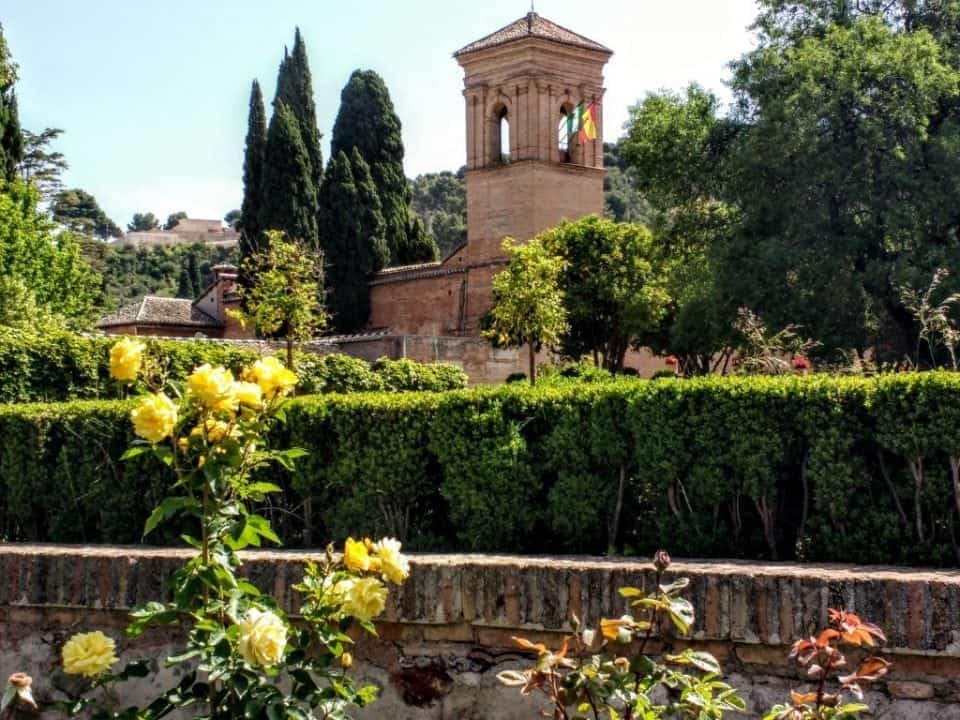
Salobreña has been watching history take shape for the past 6000 years. The Castillo was built in the 10th century and the Mudejar church was built in the 16th century. When shovels are put in the ground in the area Roman ruins turn up everywhere. Iglesia de Nuestra Señora del Rosario is built on top of the old mosque.
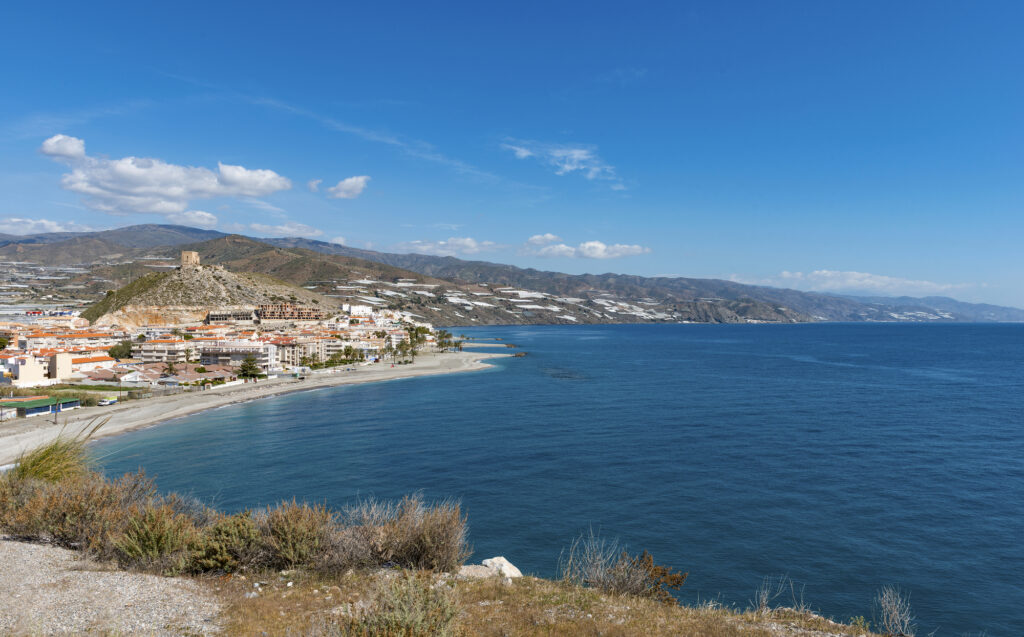
Xyuandbeyond is reader-supported. When you buy through links on our site, we may earn an affiliate commission. You can read my privacy policy here.
Map of Salobreña
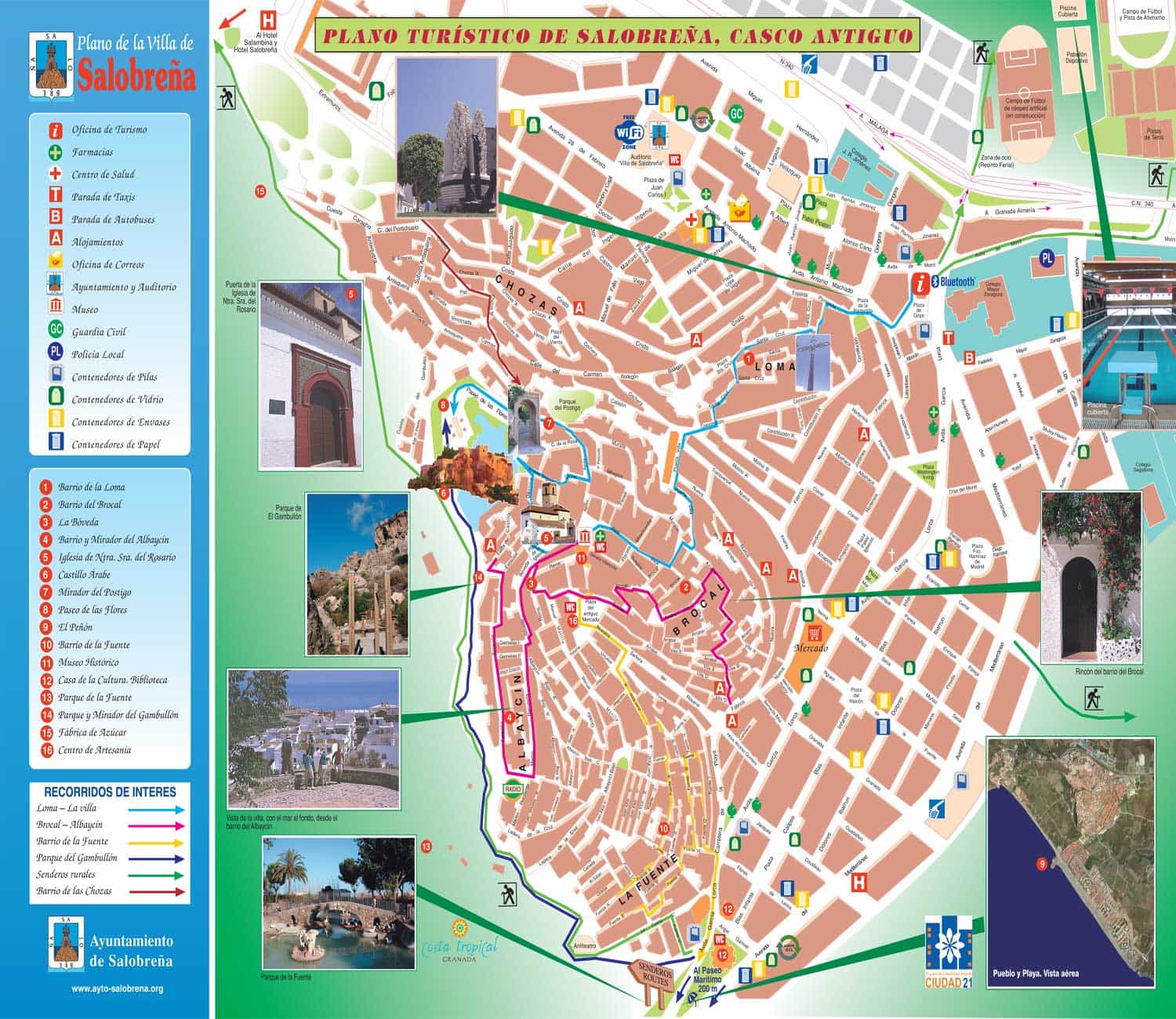
Where is Salobreña?
Salobreña is located between the tourist resorts of Motril and Almunecar, while Nerja on the eastern Costa del Sol is about twenty minutes away by car. We flew into the Almeria airport; Granada Airport is closest but has very limited flights on offer. We took the Alsa bus from the airport to Salobreña, which was nonstop and took about 2 hours at a cost of €25.00.
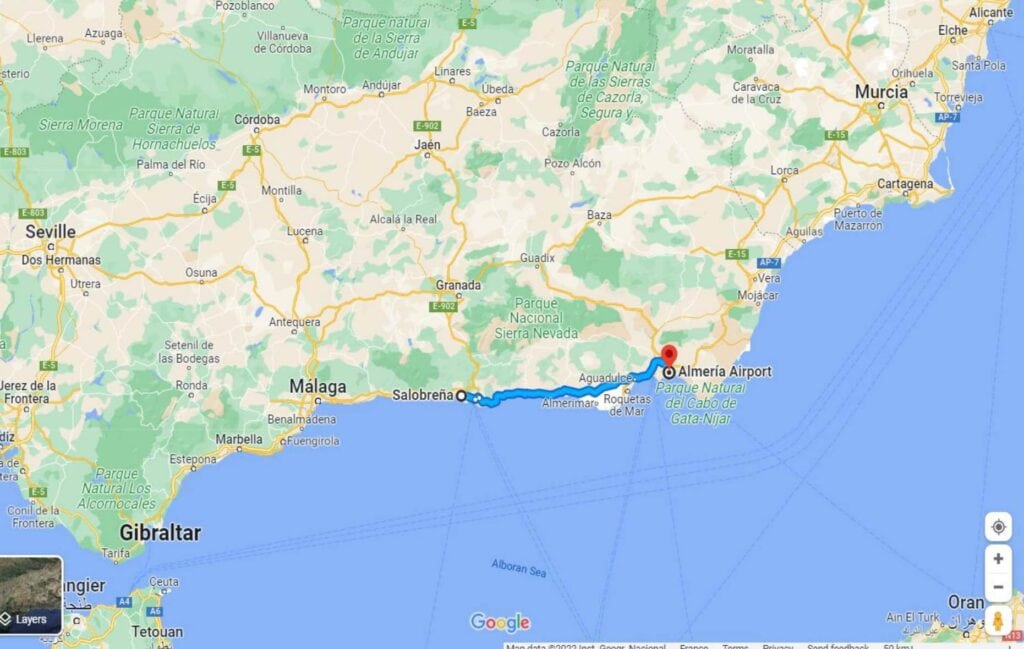
Is salobreña worth visiting?
Unreservedly yes. Salobreña is one of the most beautiful villages on the Costa Tropical. Salobrenas’ Arabic past is easily seen when you take a walk through the steep streets and visit its castle. Plus there are some absolutely stunning beaches.
Beaches of Salobreña
Salobreña has five main beaches, which are the El Cambron Beach, el Caleton Beach, La Guardia Beach, La Charca Beach and Playa Salobreña. More beaches can be found west of the village of La Caleta de Salobreña.
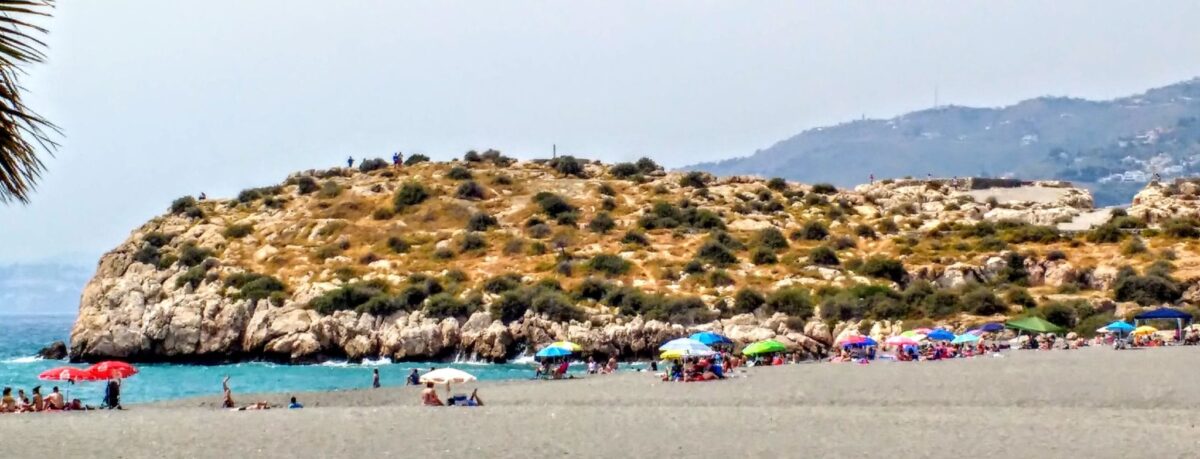
Salobrena things to do
Old Town Salobrena Spain
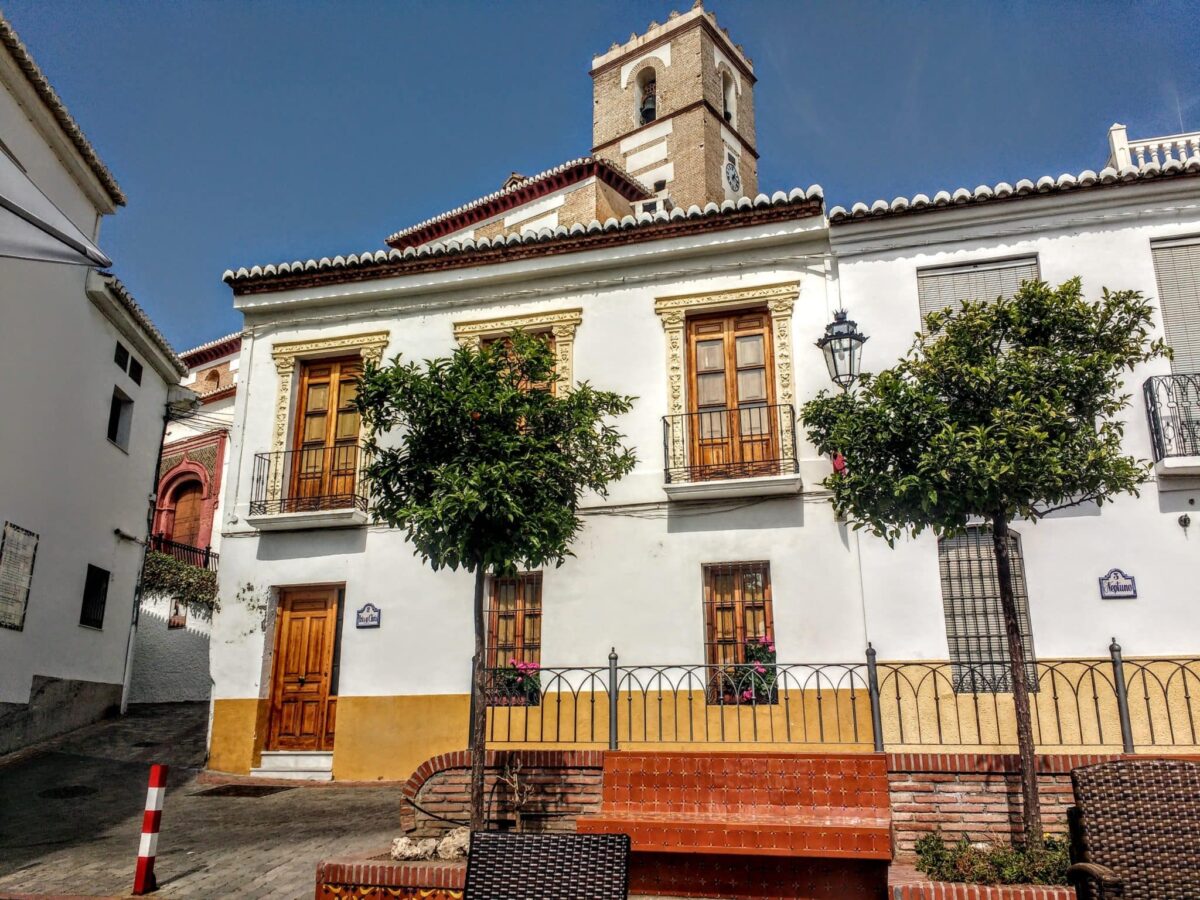
The town is located right at the top of the hill a brutal climb up and down in the heat of the day. There is a bus that goes up the hill and down several times a day for only a euro or two. The views at the top are magnificent you can the rugged landscape of the Sierra del Chaparral, the sugar cane plantations and great swathes of fruit orchards. La Caleta can also be visited and this is where the last sugar factory in Europe is located.
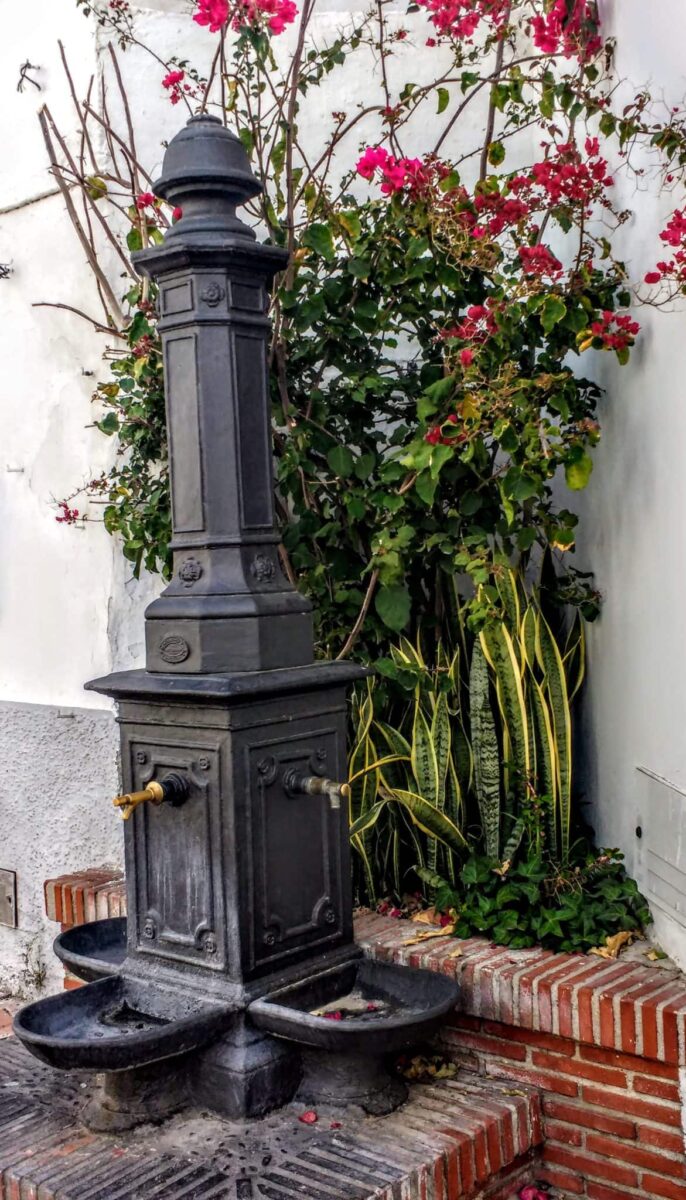
Tourist Office Salobrena Walking Tours
The Tourist Office does several walking tours and will introduce you to the highlights of the area and the town. There is a Tourist Office located down at the bottom of the hill on the main road to the beaches.
The new town sits beneath the old rock and is a mainly modern development with lots of apartments. There are tons of great restaurants and bars many of which offer some great tapas.

Salobreña Cultural activities
Salobreña enjoys a brilliant cultural scene, with year-round concerts, plays, and films. In summer, outdoor shows are held in the Castle, and other activities take place in the Old Town and Parque de la Fuente. It also has colourful annual fiestas and ferias.
Golf, tennis, football, mountain biking, and fishing, along with air and water sports are all within easy reach. A real treat for snorkelers and divers is the artificial reef built two years ago off the Peñon rock to shelter and encourage sea life, now showing remarkable results.
Salobreña Zoco de Artesanos
The Zoco de Artesanos, an artisans market, is the place to see how glassblowers, carpenters, ceramicists or toy makers work and create. It is held on Tuesdays and Thursdays at the Plaza del Antiguo Mercado.

Sugar Cane and Rum in Salobreña
Because the area around Salobreña was famous for sugar cane, you can imagine that rum goes hand in hand with that crop. These days most of the sugar factories have closed down but there is a growing trend for artisan rum making. The bodega of Ron El Mondero who have won gold medals for their elegant rum.
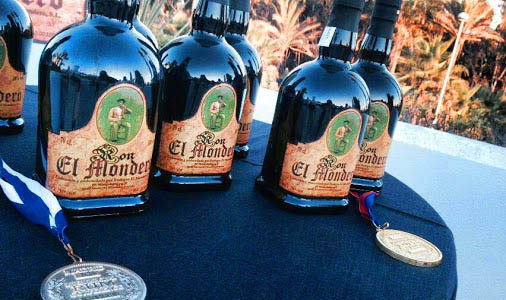
Salobreña cultural activities include medieval dinners with theatre held at the Castillo. The Lucero del Alba flamenco festival turns the castle into a whirl of castanets, beautiful dresses, and passionate flamenco.
Semana Santa (Holy Week) is an incredible experience in Salobreña it amazes me how the Pena’s manage to carry those incredibly intricate and ornate ‘tronos’, up and down the terribly narrow sloping streets.

To celebrate the area’s sugar industry the Fábrica de Azúcar has a small museum with exhibits and a model of the whole process of refining sugar cane. Located outside the town at Playa de La Caleta. Helpful if you speak and read Spanish for this Museum.
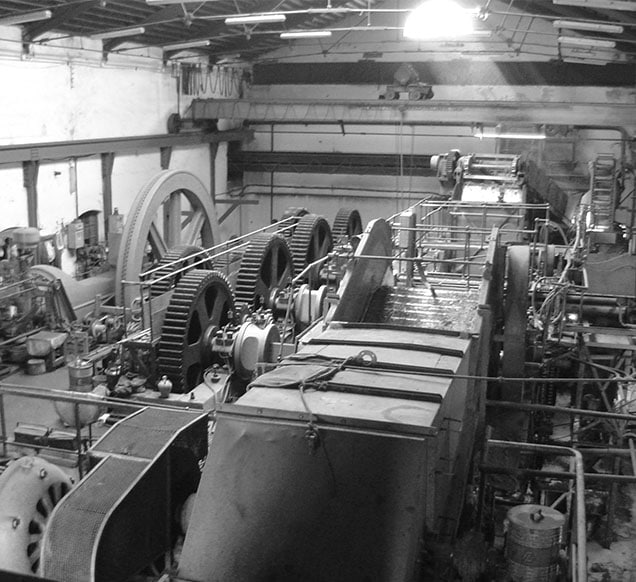
Salobreña also has a Peñon (Rock), where tourists can enjoy two of the resort’s best beaches, which are the Playa La Guardia and the Playa de la Charca.
Things to do in Salobreña Spain
El Castillo de Salobreña
At the very top heights of Salobreña sits the Castle of Salobreña. This was a Moorish stronghold that dates back to the 10th century and has breathtaking views of the surrounding areas.
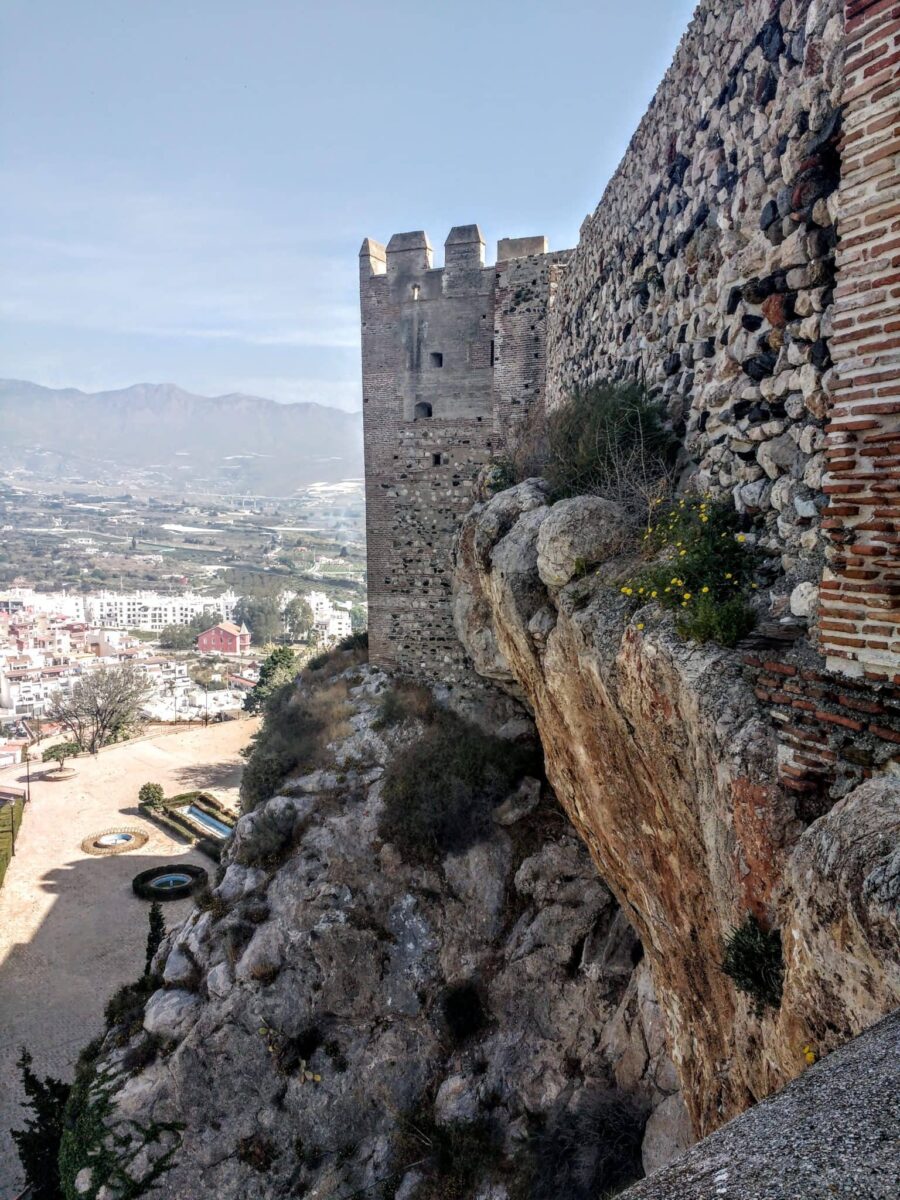
The legend of the castle is that during the Nazari reign King Muhammad IX had three daughters. The King decided to consult an astrologer about his daughter’s future and the predictions were not great.
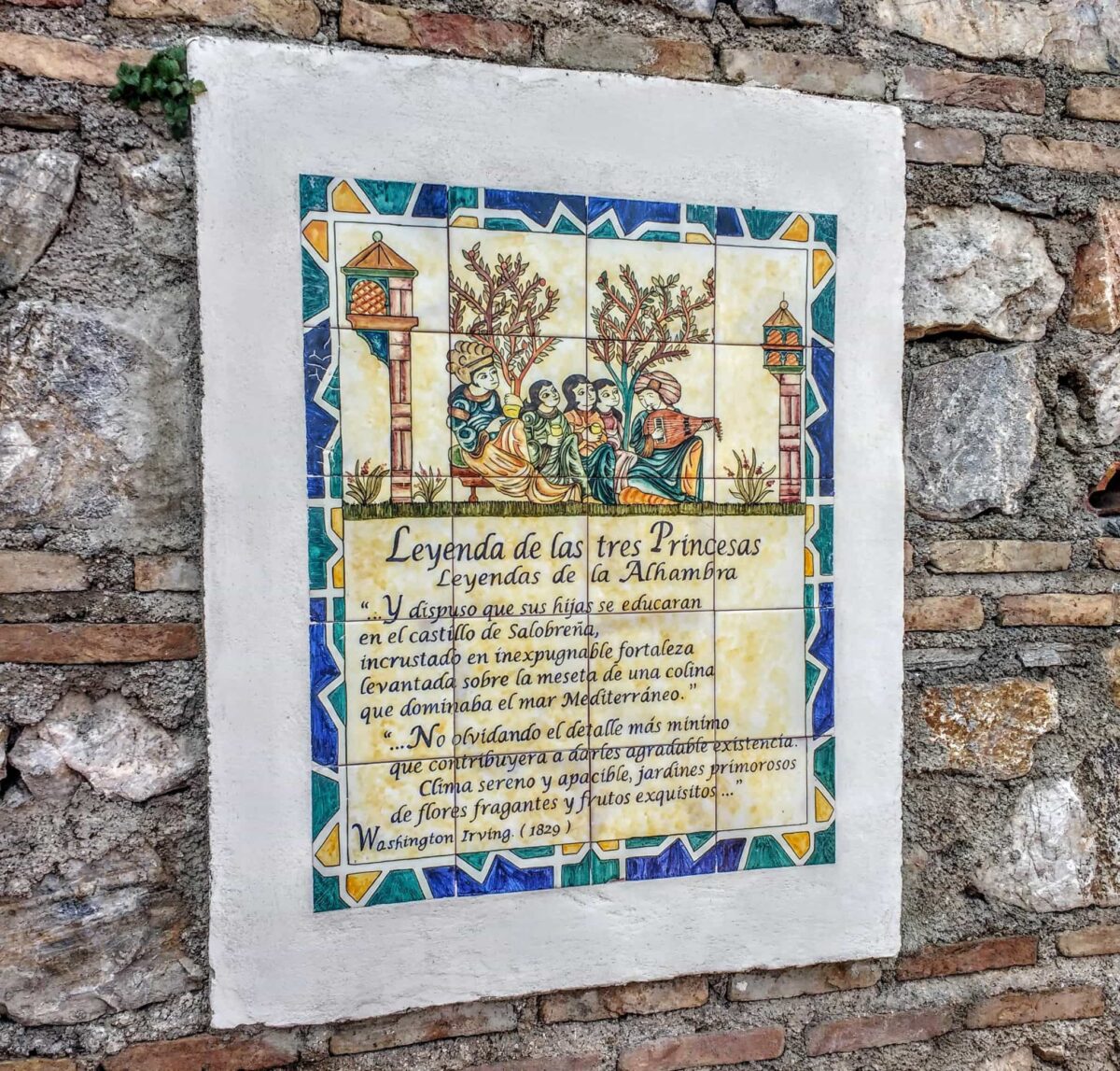
The King was told to keep a close eye on the girls because when they came of age they would be kidnapped. When the girls came of age, King Muhammad sent them to the Castillo Salobreña to keep them safe.
One day, girls being girls saw a boat of Christian soldiers landing on the shores and were curious. They spotted three particularly handsome fellows and of course as legends will have it fell in love.

Naturally being Muslim this was not going to be a happy story. Two of the sisters decided to escape with their soldier lovers but the third Zoraida could not disobey her father and remained at the Castle. Sadly, Zoraida pined for her loved one and soon died of a broken heart. The stories say that she often walks the castle walls looking for her lost love.
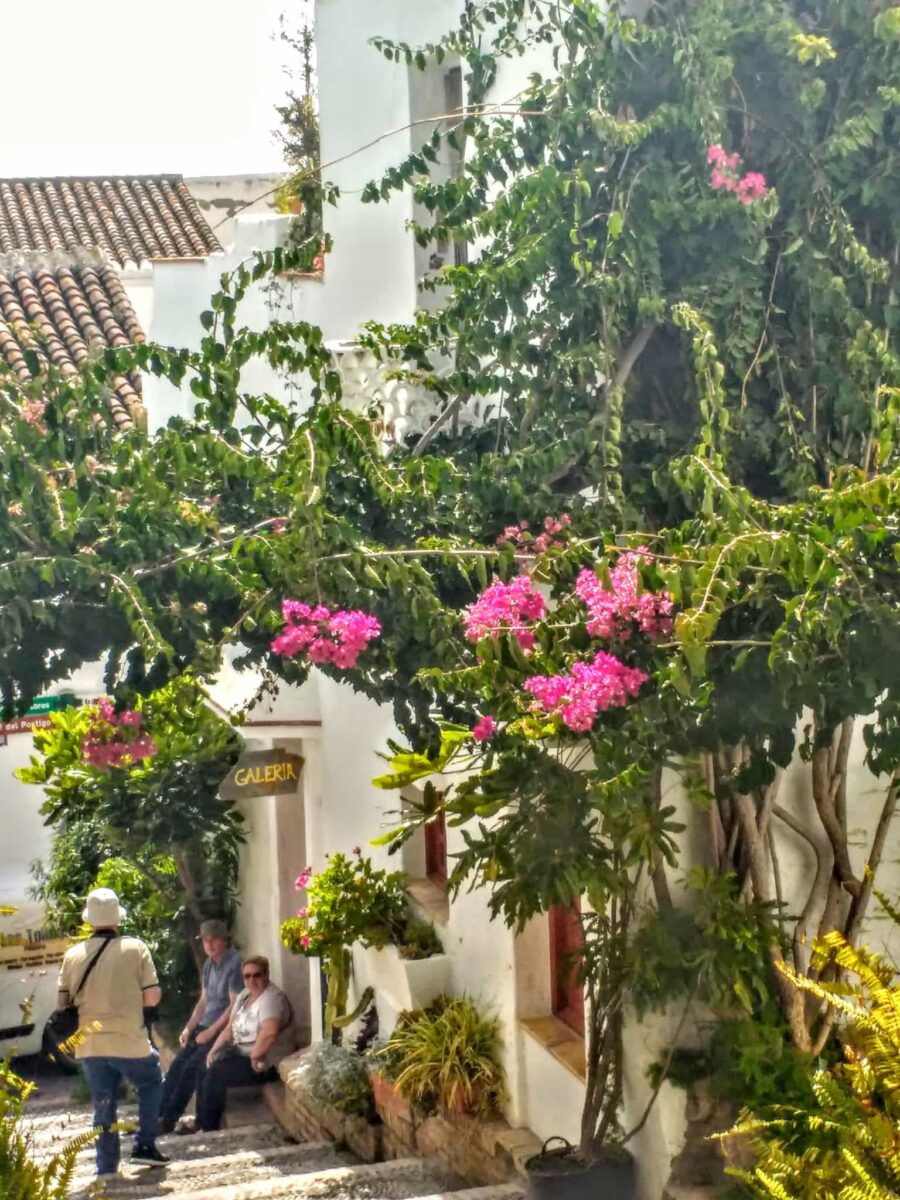
There is also a story around the succession of the Castillo. In the 15th century, the Sultan of Granada was on his deathbed and feared that his brother Yusuf might cheat the son of his inheritance, even though Yusuf was already imprisoned in Salobreña. So he sent someone to kill Yusuf – who asked for a last favour, to be allowed to finish a game of chess he had been playing. He stretched the chess game out so long that when news arrived of the death of the Sultan, he was still playing – and was proclaimed in place of his nephew.
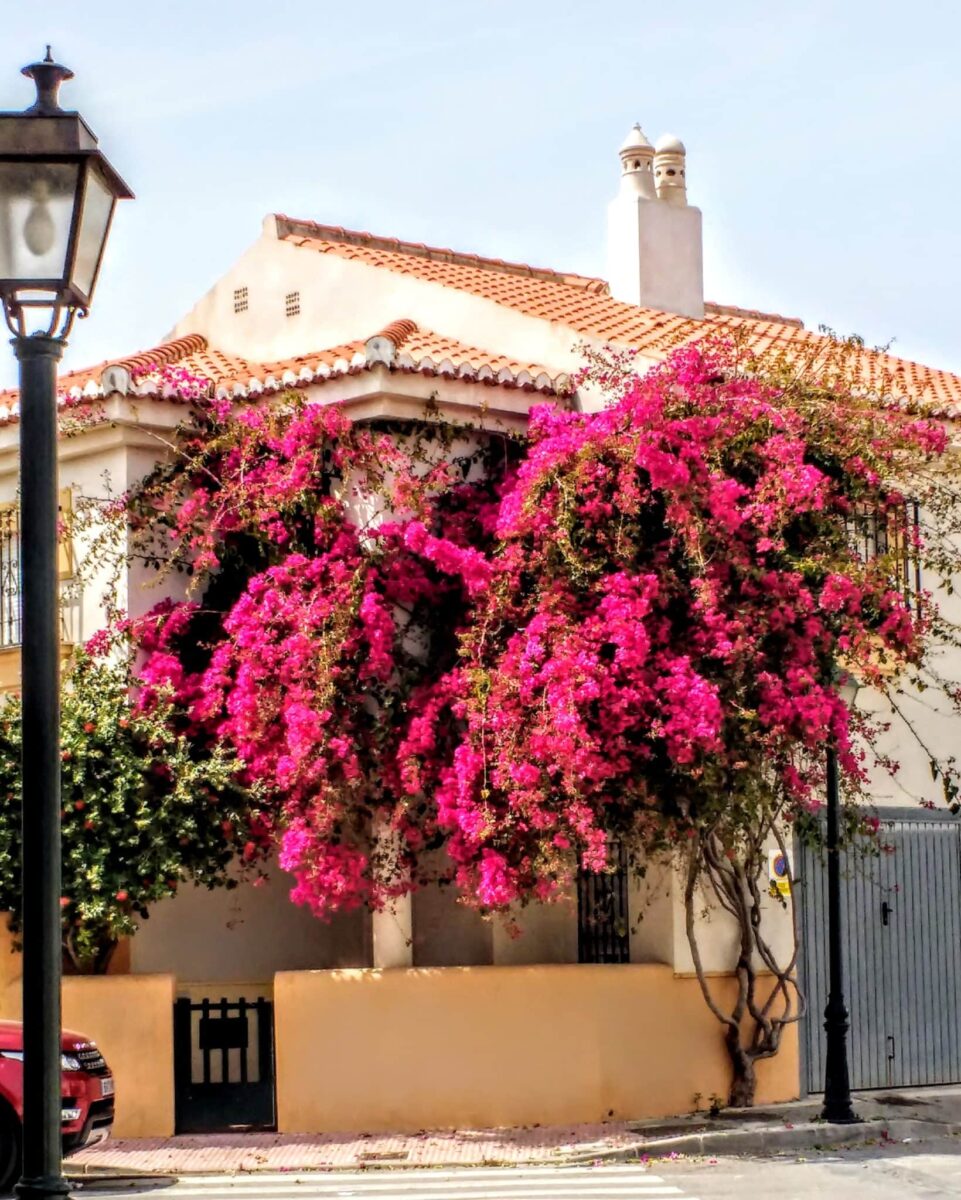
La Iglesia de Nuestra Señora del Rosario
Just below the castle is a Mudejar church, called La Iglesia de Nuestra Señora del Rosario. It was built on top of the old mosque and dates back to the 16th century. Located in the old town of Salobreña the side door of the Church still contains its decorations of tiles and the tower is typically Mudejar. The plaza in which the church sits was a Christian cemetery until 1789 and it is in this area that the Semana Santa parades begin.
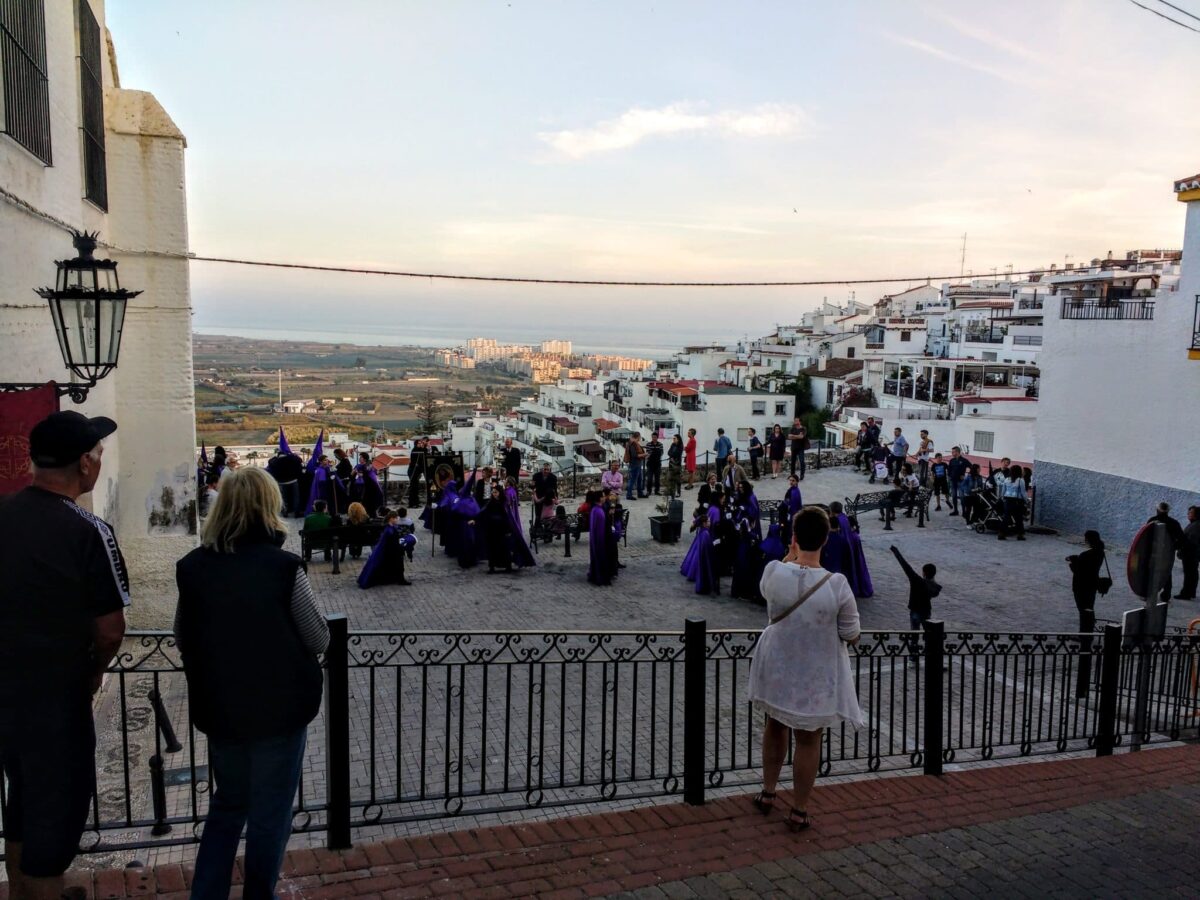
Often referred to as the jewel of the Costa Tropical Salobreña has some great walks through lovely winding flower-filled streets. The plentiful squares leave lots of room for stopping for a glass of wine and just enjoying the views and the moment.

Where to eat in Salobrena
Restaurante Bar Pesetas
We heard that the best place in Salobreña for paella and tapa was located in the old town and called Restaurante Bar Pesetas we headed there straight after the Semana Santa parades and it was packed with chattering Spanish folks we despaired of getting a table. But they fit us in and we had a meal that will linger in our memories forever.

With bowls of salmorejo and gazpacho in front of us and glorious paella to come, we admired the outstanding views of Salobreña all the way down to the sea.
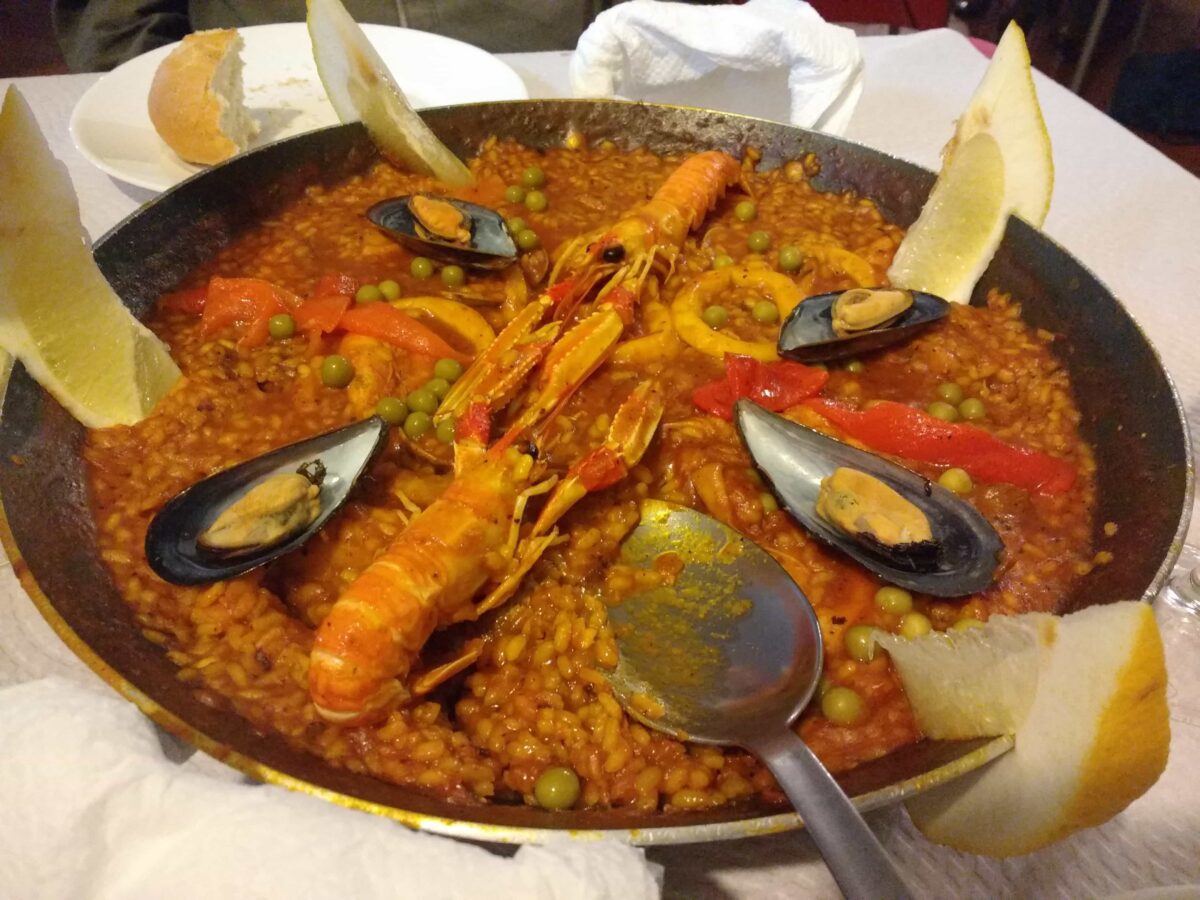
The parades of Semana Santa continued to wind their way through the old streets and often crowds would race to the verandas of the restaurant to watch the tronos as they went by.
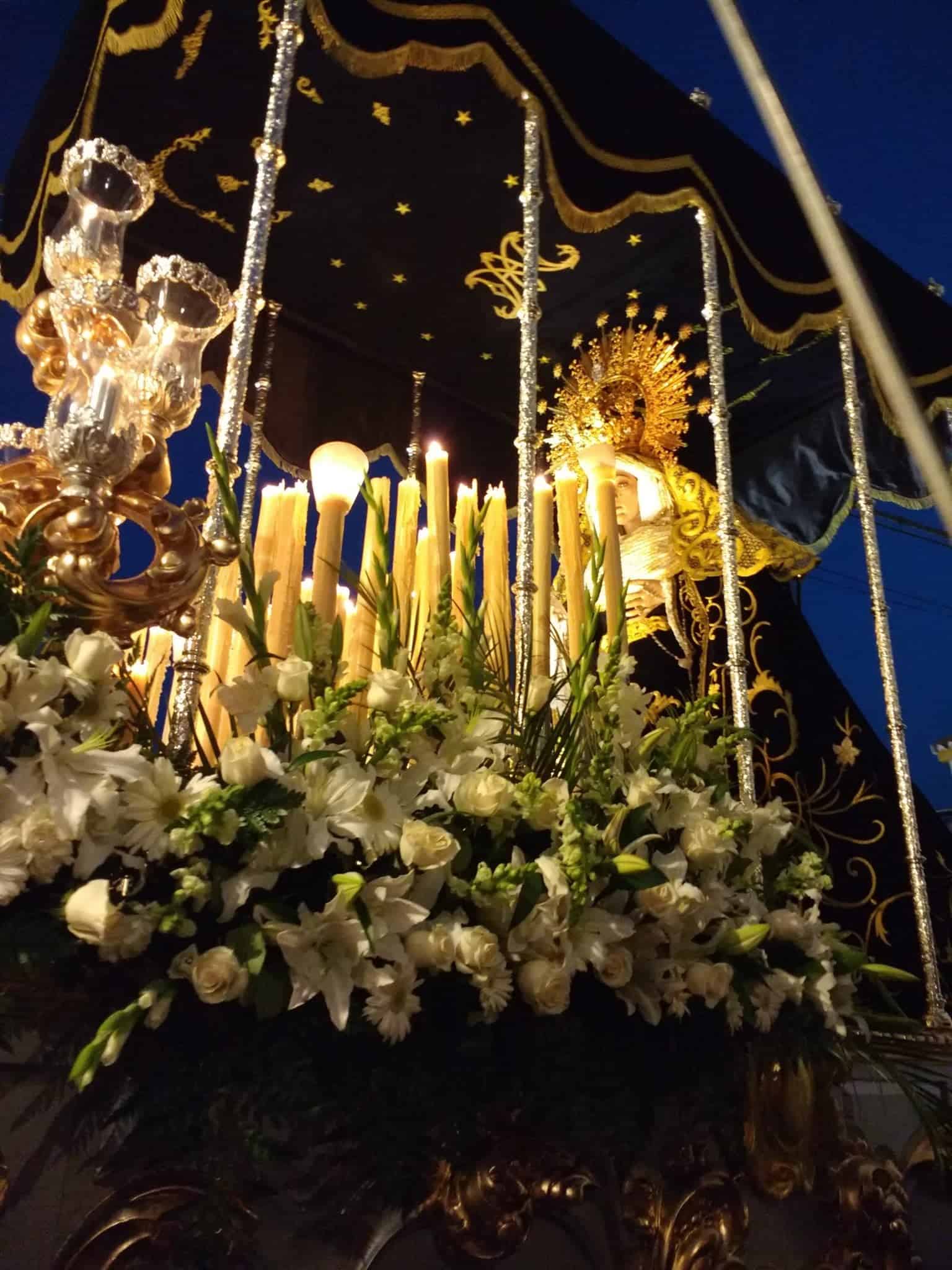
Bar Rufino
The Bar Rufino is on the beach and a fabulous place to have a little tapa and a big beer.

El Peñón Restaurant
The most famous restaurant in Salobreña was founded in 1954 and has a symbolic presence on the Costa Tropical of Granada. Located right beside the Peñon of Salobreña it has a great reputation. We, however, were not impressed the food was great but to have a real meal you need to order at least three dishes, one main seafood and then sides. It turned out to be very expensive.
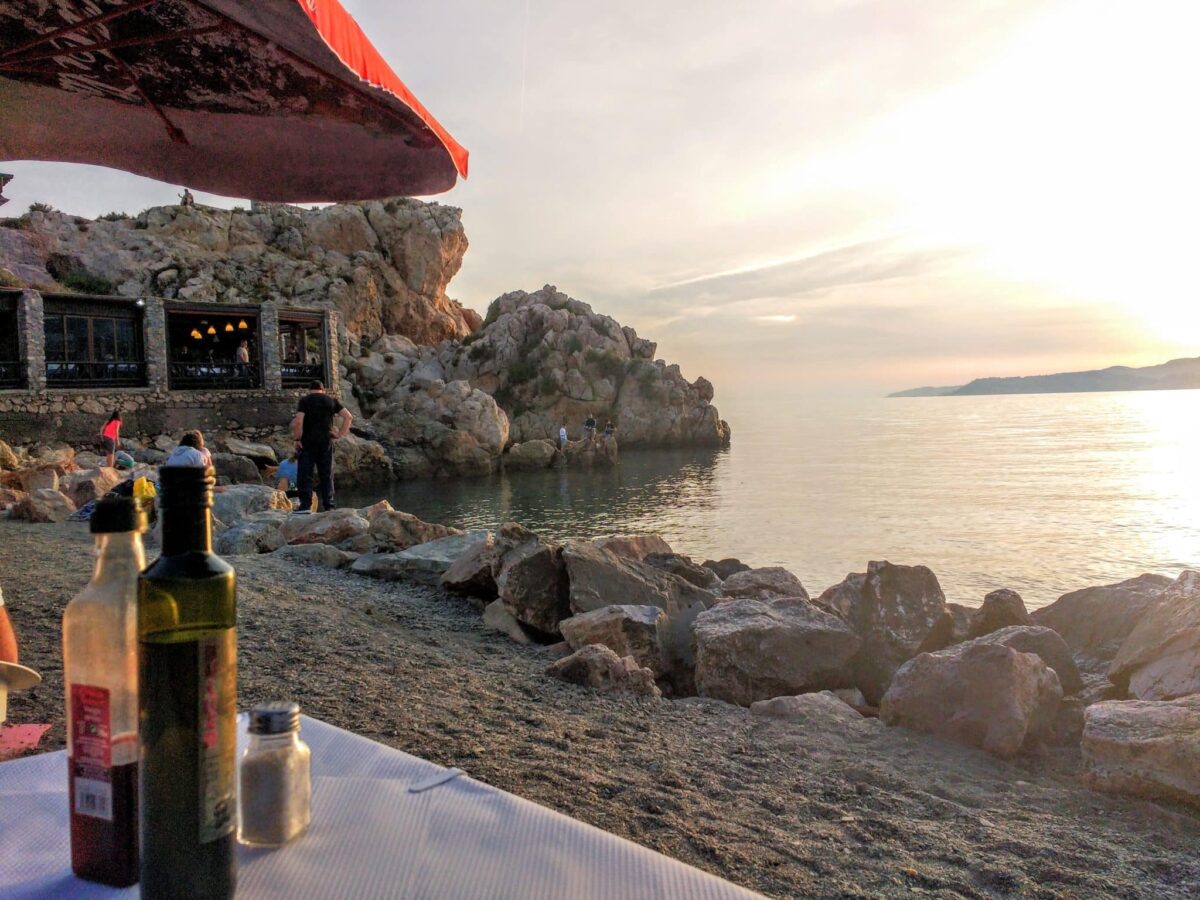
La Biznaga Restaurant
Located in the Paseo Maritimo near the Rock, this restaurant offers typical and carefully prepared dishes of Mediterranean cuisine. We were very happy when we found this place, great prices excellent food and the staff were incredibly welcoming and friendly and even taught us some Andalucian phrases.
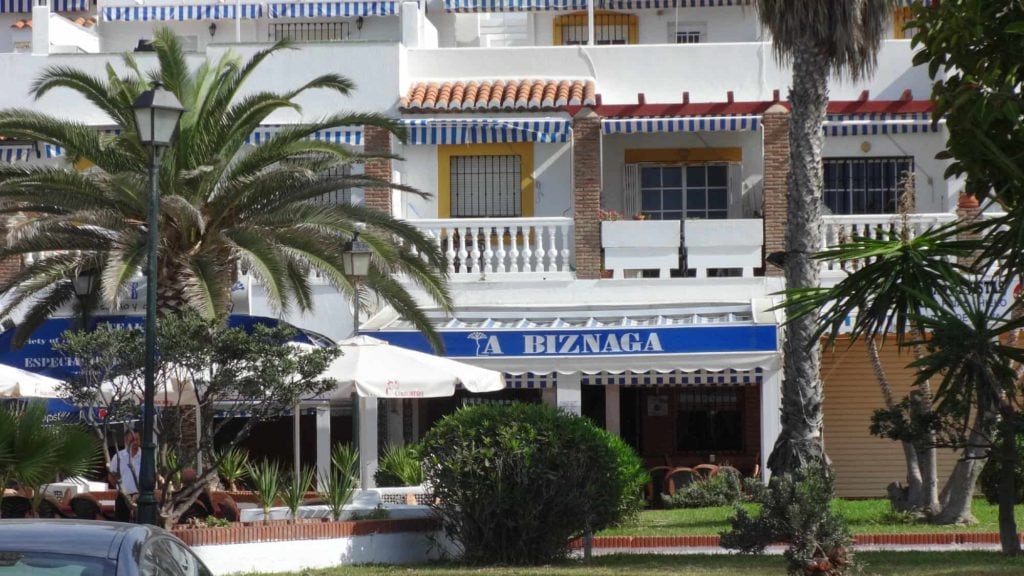
Emilio House
Emilio House is a very popular chiringuito (beach bar) it serves fantastic but pricey seafood we had the tropical fruit salads for lunch and they were just amazing.
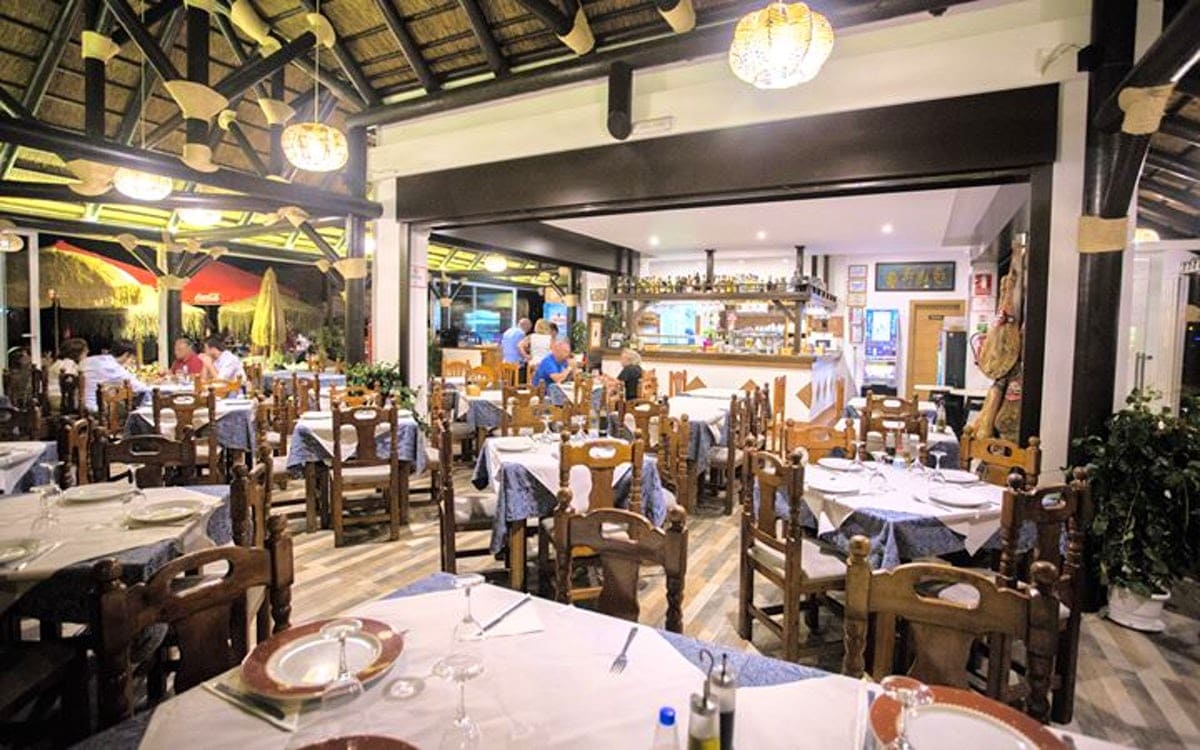
I’ve never seen a tropical fruit salad quite like the ones we had in Salobrena they were amazing.

Accommodation in Salobreña
If you would like to stay in a boutique hotel then you want to stay at the Hotel Miba.
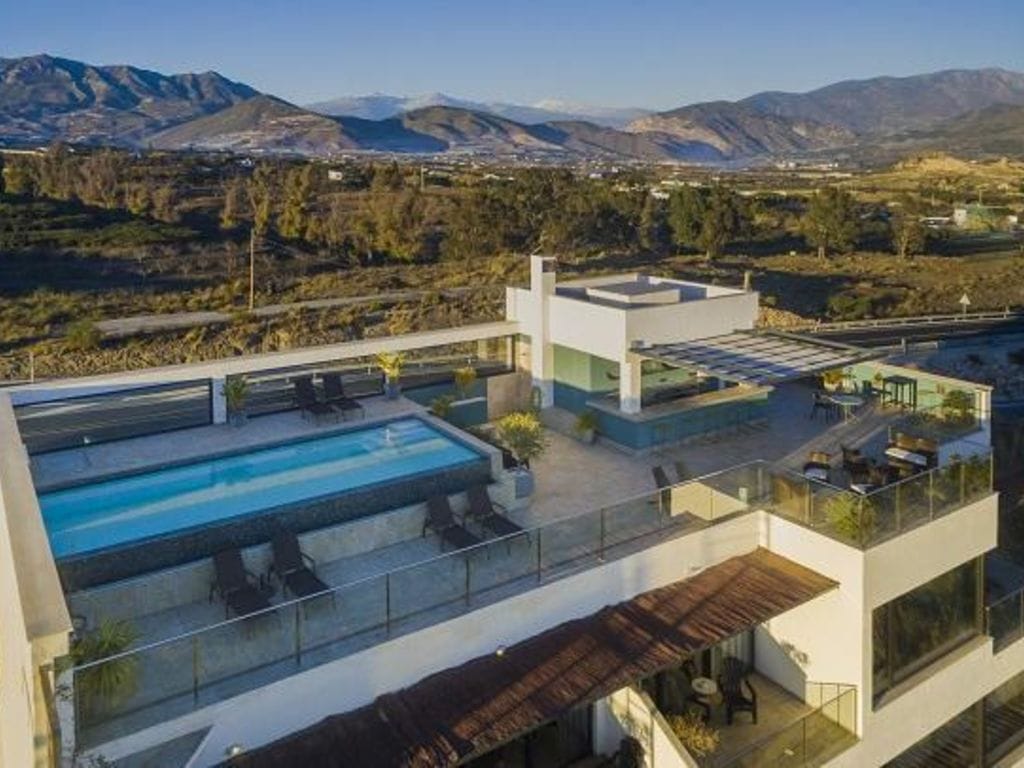
Hotel Avenida Tropical. Is within a short walk of the tourist office and the market and also very handy to the bus stop to get the bus to the old town.

Best Western Hotel Salobreña, for those that prefer something more conservative, is further from the city centre but it does have a shuttle service to visit Old Town and a nice walk to the beach.
Salobreña also has a good range of budget accommodations and the Hostal Jayma, Hostal Palomares, Hostal Mary Tere, Hostal San Juan, and the Pension Mari Carmen come highly recommended.
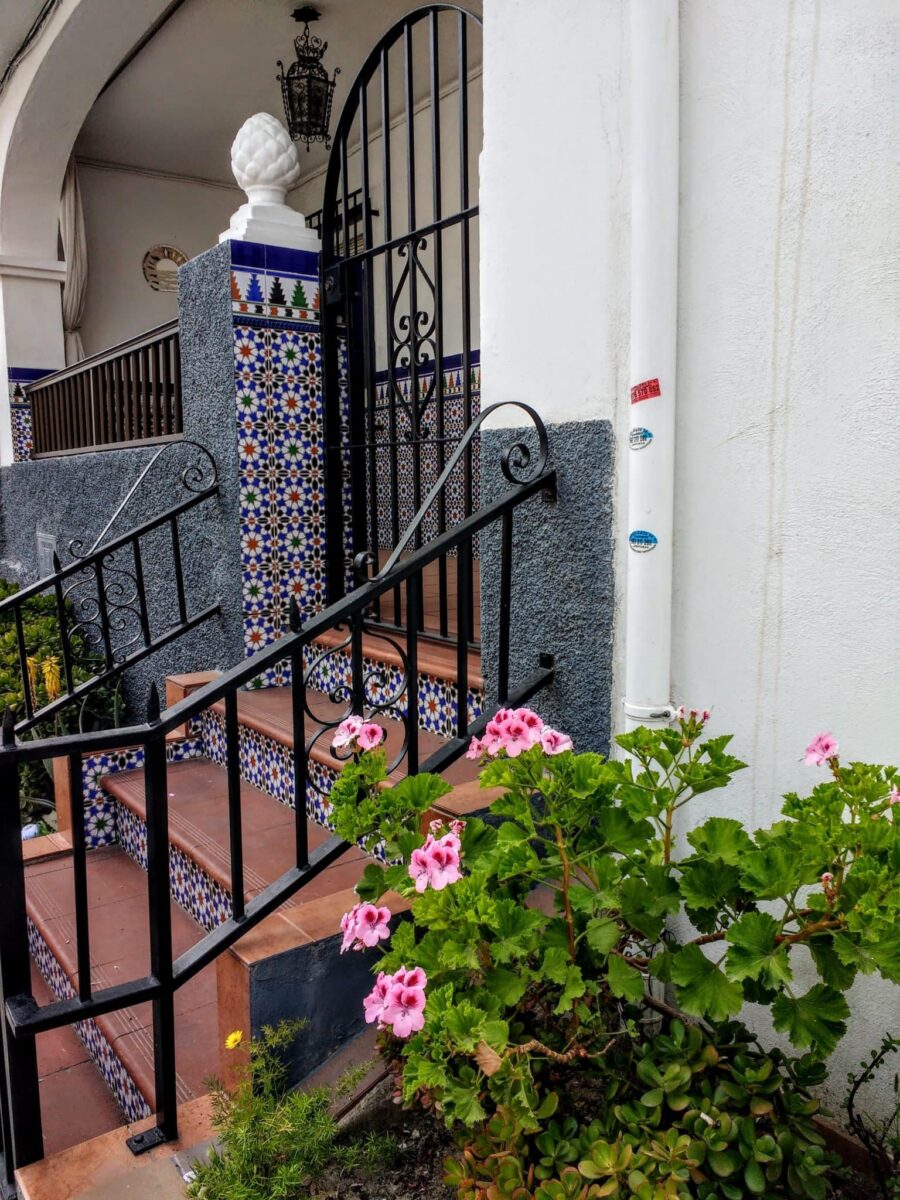
Duplex Casco Antiguo was built on the natural rock of Salobreña, located in a quiet cul-de-sac of the Old Town. Accessible by car to the front door. Independent, street-level entrance. Bright & Peaceful. Combines modern comfort with vintage furniture & local character. Fully equipped kitchen, HVAC + fibre optic WiFi + smartTV. It was a 10-minute walk to the beach and we could take a bus up to the old part of town.

Salobreña Granada is one of the many beautiful whitewashed villages along the coastline of Southern Spain if you have some time on your hands why not enjoy a 3 day Southern Spain itinerary and visit more areas along the coastline, you won’t be disappointed with taking the Ruta de los Pueblos Blancos ( the Route of the White Villages).
The Costa Tropical has a great deal to offer and is an outstanding place to visit Joanna has written a great piece on the Best Things to do on the Costa Tropical which talks about visiting the beaches and enjoying the cuisine of the area.
If you get a chance you must visit Salobreña you won’t be disappointed, here is the tourist information office when you go
Salobreña Tourist Information Office
Salobreña Tourist Office
Address: Plaza Goya, s/n, 18680, Salobreña (Granada).
Telephone: +34 958610314
Email: [email protected]
Website: https://www.ayto-salobrena.org
You might also like
Ultimate Southern Spain Road Trip
The Best Things To Do in Valencia
20+ Pros and Cons of Living in Spain
Ronda, Spain: A Local’s Itinerary for a Perfect 2 Day Trip
23 Unique things to do in Cartagena Spain
Magical Things to Do in Seville Spain
Spanish Food: 40 of the best foods in Spain
Mojácar Spain: the perfect guide to this charming village
Pin it for later
